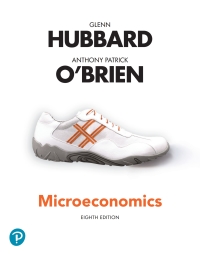We saw in Chapter 4, Solved Problem 4.4 that Seattle levies a tax on soda of 1.75
Question:
We saw in Chapter 4, Solved Problem 4.4 that Seattle levies a tax on soda of 1.75 cents per ounce. A report prepared by Jesse Jones-Smith of the University of Washington and Nadine Chan of the Seattle Department of Public Health found that the price of soda increased by 1.70 cents per ounce following the imposition of the tax.
a. Briefly explain what this result tells us about the size of the price elasticity of demand for soda in Seattle relative to the price elasticity of supply.
b. Suppose that the price of soda had increased by only 0.20 cents per ounce following the imposition of the tax. Would the excess burden of the tax have been smaller or larger than the excess burden that resulted from the price increasing by 1.70 cents per ounce? Illustrate your answer with a graph that shows the size of the excess burden in each case.
Data given in Solved Problem 4.4
In 2018, the Seattle city council imposed a tax of 1.75 cents per ounce on sugar-sweetened beverages such as Coca-Cola, Kool-Aid, and Gatorade. Distributors who supply beverages to supermarkets and other stores pay the tax. A report prepared by Jesse Jones-Smith of the University of Washington and Nadine Chan of the Seattle Department of Public Health studied the incidence of the tax.
Step by Step Answer:






